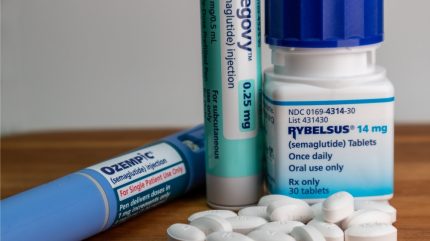Pre-diabetes rates increase amidst a renaissance for type 2 diabetes research
Drug ApprovalAcquisitionPhase 2License out/in

Preview
Source: Pharmaceutical Technology
There are currently six GLP-1RAs available in the UK. Image credit: Shutterstock / KK Stock.
England’s National Health Service (NHS) has reported an 18% increase in the number of people with non-diabetic hyperglycaemia – also known as pre-diabetes.
The latest National Diabetes Audit shows that 3,615,330 people registered with a GP have pre-diabetes and are at a greater risk of developing type 2 diabetes (T2D). Compared to 2023 figures, this is up by more than half a million patients.
Now, the proliferation of glucagon-like peptide-1 receptor agonists (GLP-1RAs), in particular, has transformed diabetes care. These drugs work by mimicking the GLP-1 hormone that is normally released after eating, which stimulates various glycaemic control mechanisms.

Preview
Source: Pharmaceutical Technology
AbbVie signs agreement to acquire Landos Biopharma for $212.5m

Preview
Source: Pharmaceutical Technology
There are currently six GLP-1RAs available in the UK. The more popular options are Eli Lilly’s Mounjaro (tirzepatide) and Novo Nordisk’s Ozempic (semaglutide). Novo Nordisk also markets semaglutide in the oral form as Rybelsus. Other approved treatments include Eli Lilly’s Trulicity (dulaglutide), Novo Nordisk’s Victoza (liraglutide), and Sanofi’s Lyxumia (lixisenatide), all GLP-1RAs.
The sharp rise in uptake of GLP-1RAs has outpaced supply, however, leading to shortages in the NHS earlier this year. Off-label prescribing worsened the shortages, prompting guidance from a Medicines Safety Notice in March telling clinicians to only prescribe the drugs for their licensed indication.
At the same time, an increased supply of Rybelsus, and the introduction of Mounjaro in the supply chain have been highlighted by charity Diabetes UKDiabetes UK. The shortages are likely expected to last until the end of this year, according to Douglas Twenefour, head of care at Diabetes UKDiabetes UK.
Twenefour added: “We fully support the instruction that GLP-1 medications should not be prescribed off-label under any circumstances while there is an ongoing shortage impacting people with T2D.”
Global pharma scene
Novo Nordisk and Eli Lilly, market leaders for GLP-1RAs, are now the two biggest pharmaceutical companies in the world. Novo Nordisk has a market cap of $436bn while Eli Lilly’s market cap is $839.5bn.
Their success has meant other players in the industry have been making a push into diabetes – and more broadly weight loss – treatments. AstraZeneca received US Food and Drug Administration (FDA) approval earlier this week for its paediatric type 2 diabetes treatment Farxiga (dapagliflozin). Farxiga, marketed as Forxiga in the EU, is already approved as an adjunct to diet and exercise to improve glycaemic control in adults with T2D.
Pfizer is eying the lucrative metabolic disease market but suffered a setback after its weight loss pill, lotiglipron, caused serious side effects in a Phase IIb trial, causing the company to drop its GLP-1RAGLP-1RAGLP-1RAGLP-1RAGLP-1RAGLP-1RAGLP-1RAGLP-1RA candidate. Pfizer will rest its hopes on its other candidate, danuglipron, to take on competitors.
For more details,please visit the original website
The content of the article does not represent any opinions of Synapse and its affiliated companies. If there is any copyright infringement or error, please contact us, and we will deal with it within 24 hours.
Organizations
Indications
Targets
Hot reports
Get started for free today!
Accelerate Strategic R&D decision making with Synapse, PatSnap’s AI-powered Connected Innovation Intelligence Platform Built for Life Sciences Professionals.
Start your data trial now!
Synapse data is also accessible to external entities via APIs or data packages. Leverages most recent intelligence information, enabling fullest potential.





